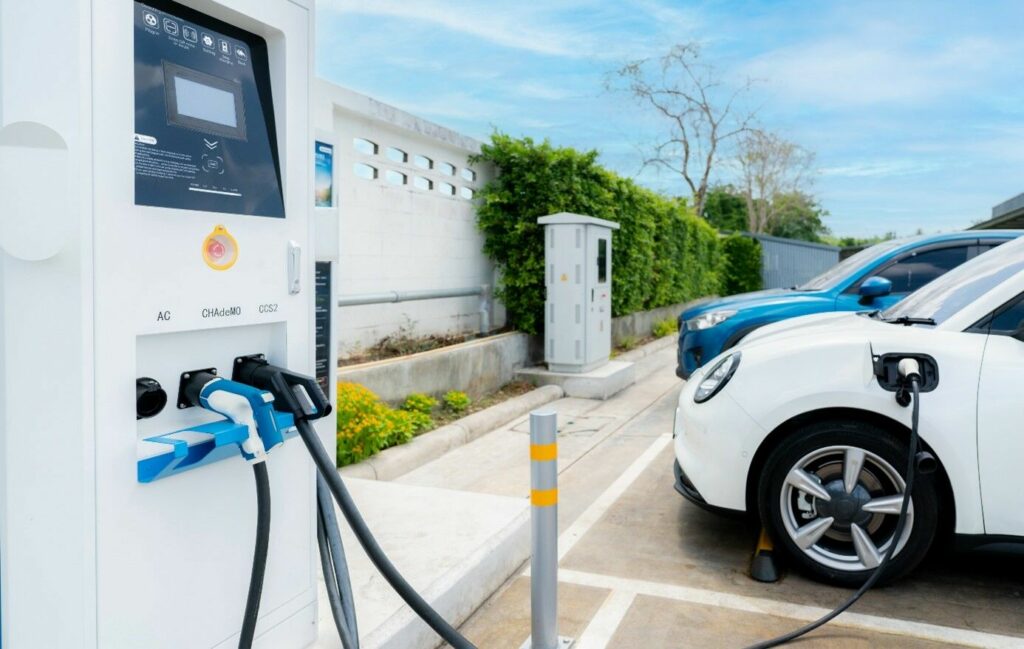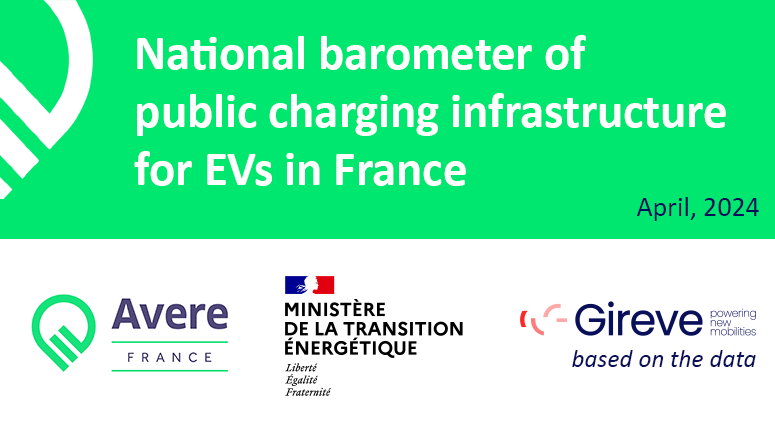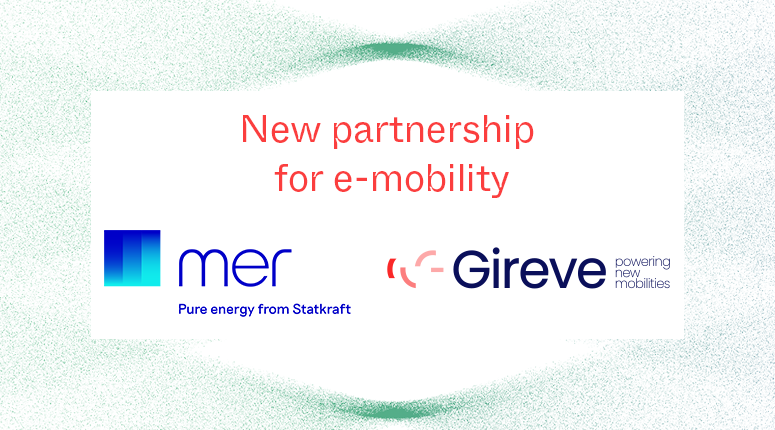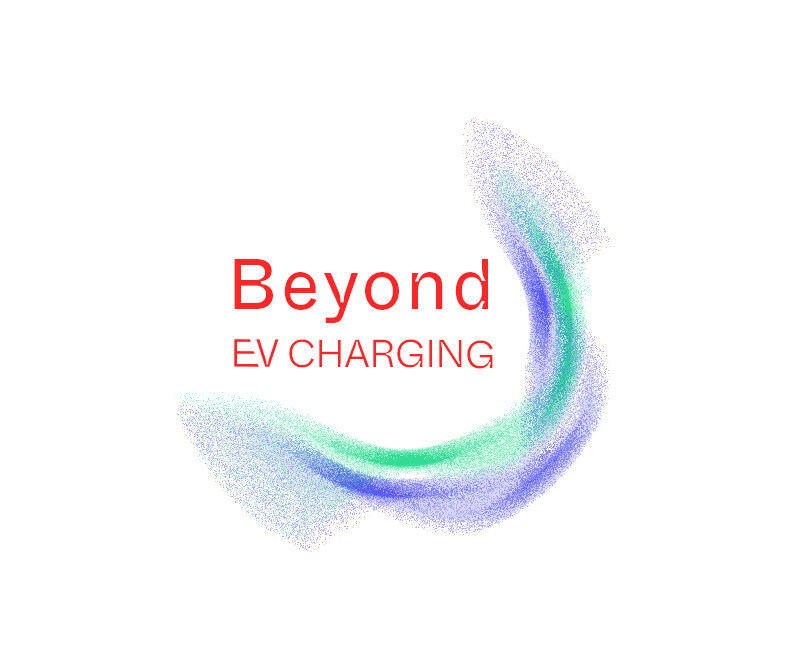
Exploring the future of 43 kW AC charging in Europe
Discover our new series on 43 kw AC charging! At Gireve, we are at the heart of the EV charging industry, empowering CPOs and eMSPs with our seamless roaming platform. Combining marketplace technologies, transaction processing, and data management, our mission is to support stakeholders and accelerate their transition to electric mobility on a global scale.
But we don’t stop there; we process and enrich data concerning charging stations and driver behaviors. We offer insightful analysis and strategic counsel. We believe that this wealth of information will shape the future of mobility, making it sustainable, innovative, and accessible to all.
This is why we’re sharing a series of insights learned from our data, to foster discussions and learn together.
We are happy to present our monthly publication related to our Data and Consulting department: Beyond EV Charging
Executive Summary
This paper examines the status of 43 kW alternative current (AC) charging in Europe. AC charging is divided into single-phase and three-phase currents impacting the power output for charging. Electric vehicle (EV) charging using AC involves an on-board AC/DC converter within the vehicle. Initially, 43 kW AC charging with three-phase current was primarily developed for the first generation of Renault ZOE to enable fast charging. However, the market did not follow, and currently, no new vehicles have this compatibility. Our analysis indicates that most 43 kW AC chargers have been installed in Western Europe (68% in 2023), where the Renault ZOE was highly popular. Although this configuration remains installed today, it represents a decreasing proportion of the overall charger fleet (11% of fast chargers today). Based on the decreasing trend of 43 kW AC connectors in new fast chargers (from 21% in 2018 to 7% in 2023), we estimate that there will be either no new 43 kW AC installations or very few by 2025.
What’s the status of 43 kW AC charging in Europe?
In this second paper, we’re exploring the actions of CPOs concerning the 43 kW AC connectors on fast chargers. You will access an analysis of European regions and the global trends in new fast charger installations.
What is 43 kW AC charging?
Before the widespread adoption of electric vehicles, most early EVs used standard household outlets (230V AC) for public charging, which was relatively slow. These are typically referred to as mode 1 and mode 2 charging. It can charge a vehicle up to 3,7 kW using single phase current and plug in a household socket. Today, it is mostly used for charging at home.
In comparison, mode 3 charging still uses alternative current. But it is on a dedicated charger which can charge using single phase or three phase current. Their range of power is from 3,7 kW to 43 kW.
Compared to DC, AC charging requires an AC/DC conversion inside the vehicle as the battery uses DC to store energy.
Compatibility with the first EVs
Some car manufacturers have made possible charging an EV with AC up to 43 kW. This is the case with Renault in the very early days of EV with the ZOE. But most manufacturers didn’t follow the trend and chose 7 to 22 kW AC charging. They added DC charging where power output can be much higher. For example, at the end of 2022, the vehicles’ average maximum AC power input in France was about 11 kW (AVERE expert barometer).
This particular charging requires a large AC to DC converter inside the vehicle, making the car more expensive while the AC/DC conversion for DC charging takes place outside the vehicle, reducing costs for OEM.
AC charging is mainly limited by four components, taking the least powerful as a reference for maximum output:
- Charging cable
- Vehicle’s onboard charger
- Charging station
- Grid connection
Evolution of charging station configuration
Today, most 43 kW AC charging is possible on 50 kW chargers (fast chargers) which have the following configuration: 1 or 2 DC plugs (50 kW) and 1 AC plug (43 kW). What is more, some ultra-fast chargers may also offer an AC connector with up to 43 kW power. The most popular configuration that has been installed is the tri-standard. It comprises a combo DC connector, a CHAdeMO connector and 43 kW AC connector. It was meant to be compatible with most of the electric vehicles.
Here are common examples of fast chargers with this configuration chargers:
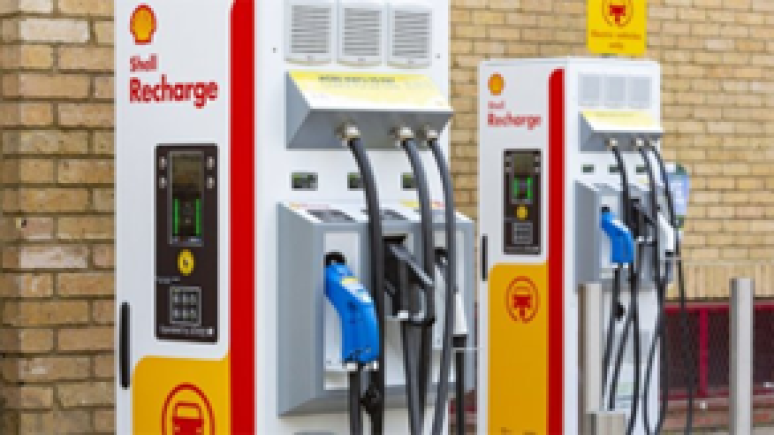
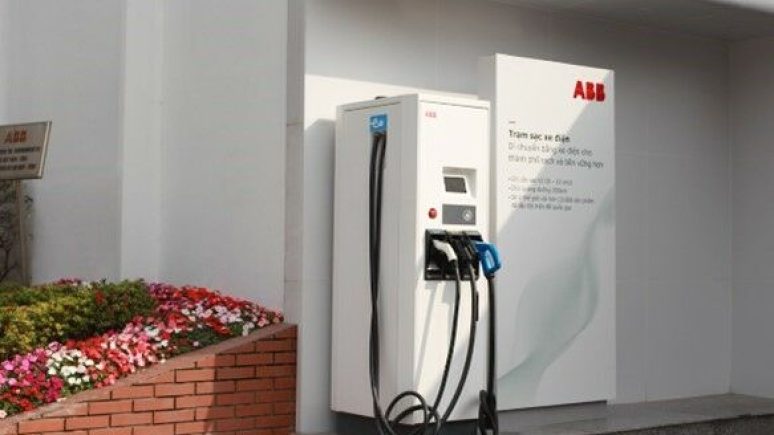
Here, we will look at the current status of 43 kW AC charging in Europe as some CPOs have recently announced phasing out of this configuration.
43 kW AC connector trend in Europe
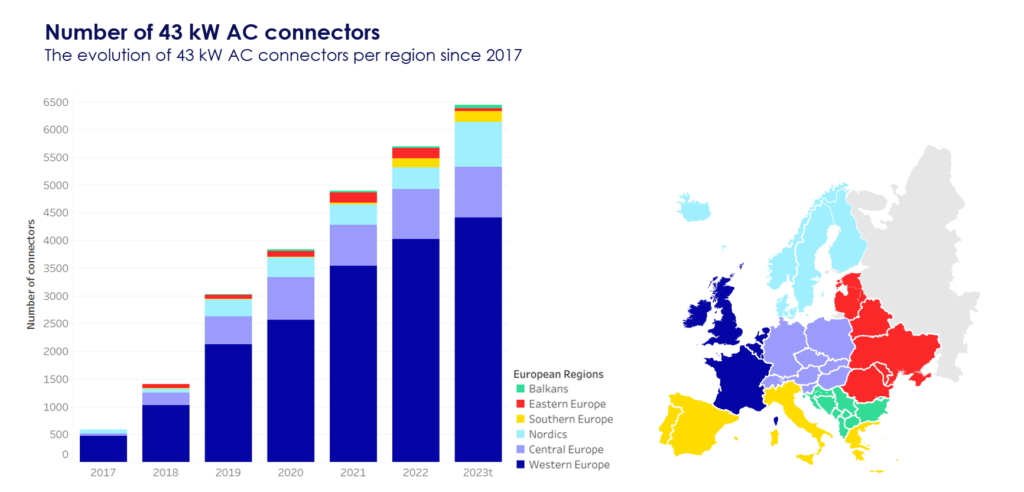
Two significant insights emerge from this data:
- The majority of 43 kW AC connectors are concentrated in Western Europe
- There are still installations of 43 AC connectors
A closer look at Western Europe reveals that 43 kW AC connectors are predominantly found in France and the UK. In the case of France, this can be attributed to the widespread adoption of the Renault ZOE during the early days of electric vehicles, prompting public authorities to install suited EV chargers in response. In the UK, the adoption of a multi-standard approach aimed to enable all EVs to charge independently, regardless of their connector compatibility.
AC connectors are still installed; but what about their share in the network of fast chargers?
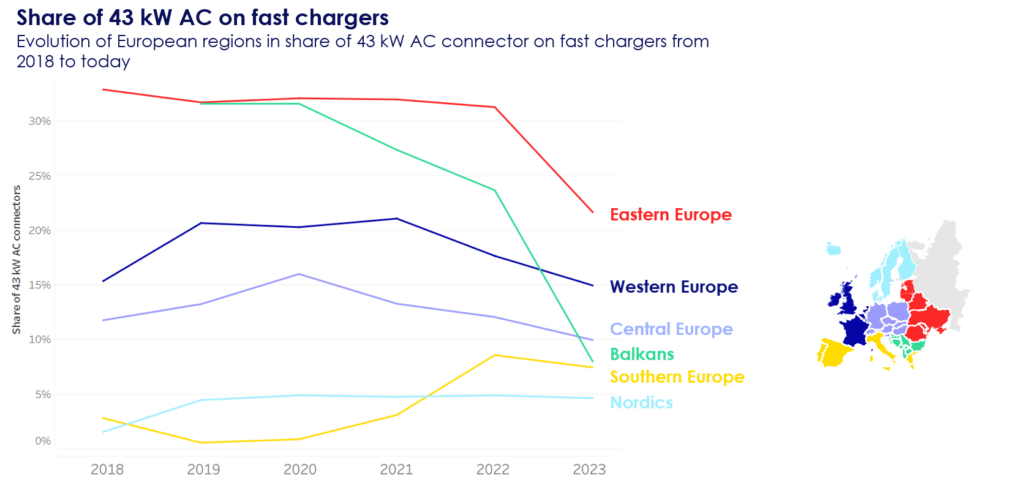
This graph illustrates a clear trend of decreasing 43 kW AC connectors on fast chargers across all European regions. Southern Europe is the only region showing an increase in its share of 43 kW AC connectors on fast chargers, thanks to the recent surge in fast and ultra-fast charging deployment in Spain and Italy.
Turning our attention to Western Europe, which houses the majority of 43 kW connectors, they once represented nearly a quarter of fast charger connectors but have now dwindled to less than 15%.
What is happening with the new chargers?
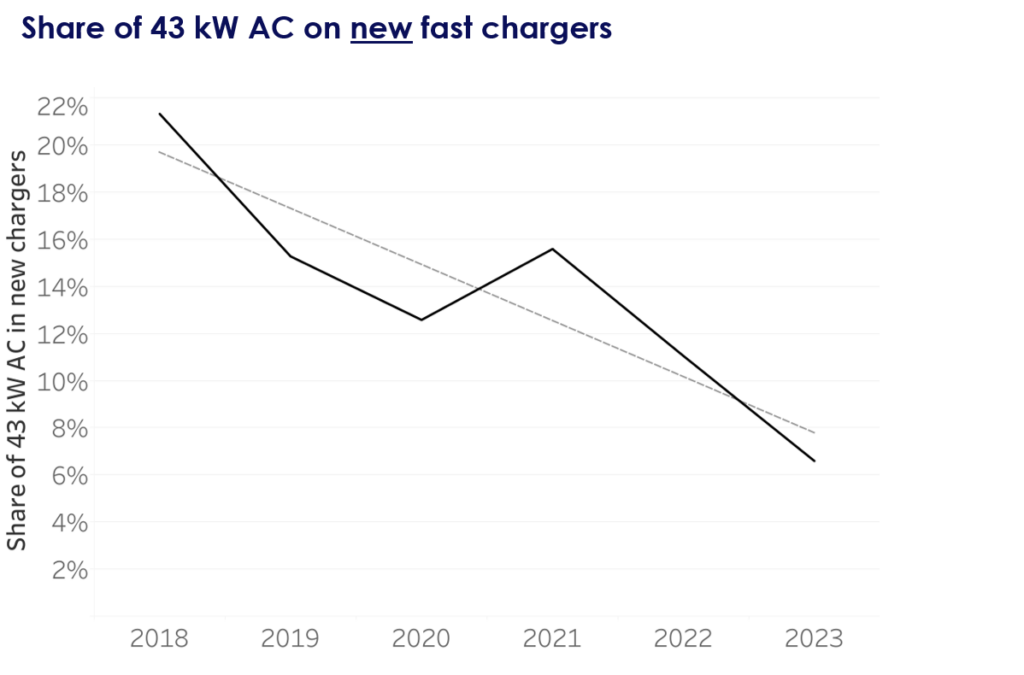
Overall, the majority of newly installed fast chargers have no 43 kW AC connectors. In 2023, only 7% of new fast chargers feature these connectors, a significant drop from the 21% recorded in 2018.
Charging Point Operators have maintained the configuration of two DC connectors and one 43 kW AC connector for some time. However, there is now a noticeable trend toward using only DC connectors.
Conclusion
Initially, 43 kW AC connectors were installed on fast chargers to accommodate ZOE owners, given its popularity. However, today, all new cars come with DC charging capabilities, and they can’t all charge at over 22 kW with AC. Consequently, there’s no need for more of these connectors. The numbers shown on graphs indicate a significant shift away from 43 kW AC connectors in fast chargers. For instance, Allego recently announced their discontinuation, as it no longer makes sense. With this trend, we anticipate a complete phase-out of 43 kW AC connectors on new chargers by 2024-2025.
